Omega and METAS – The start of a new Era – Visiting the Omega Manufacture & the METAS certification (Part 2)
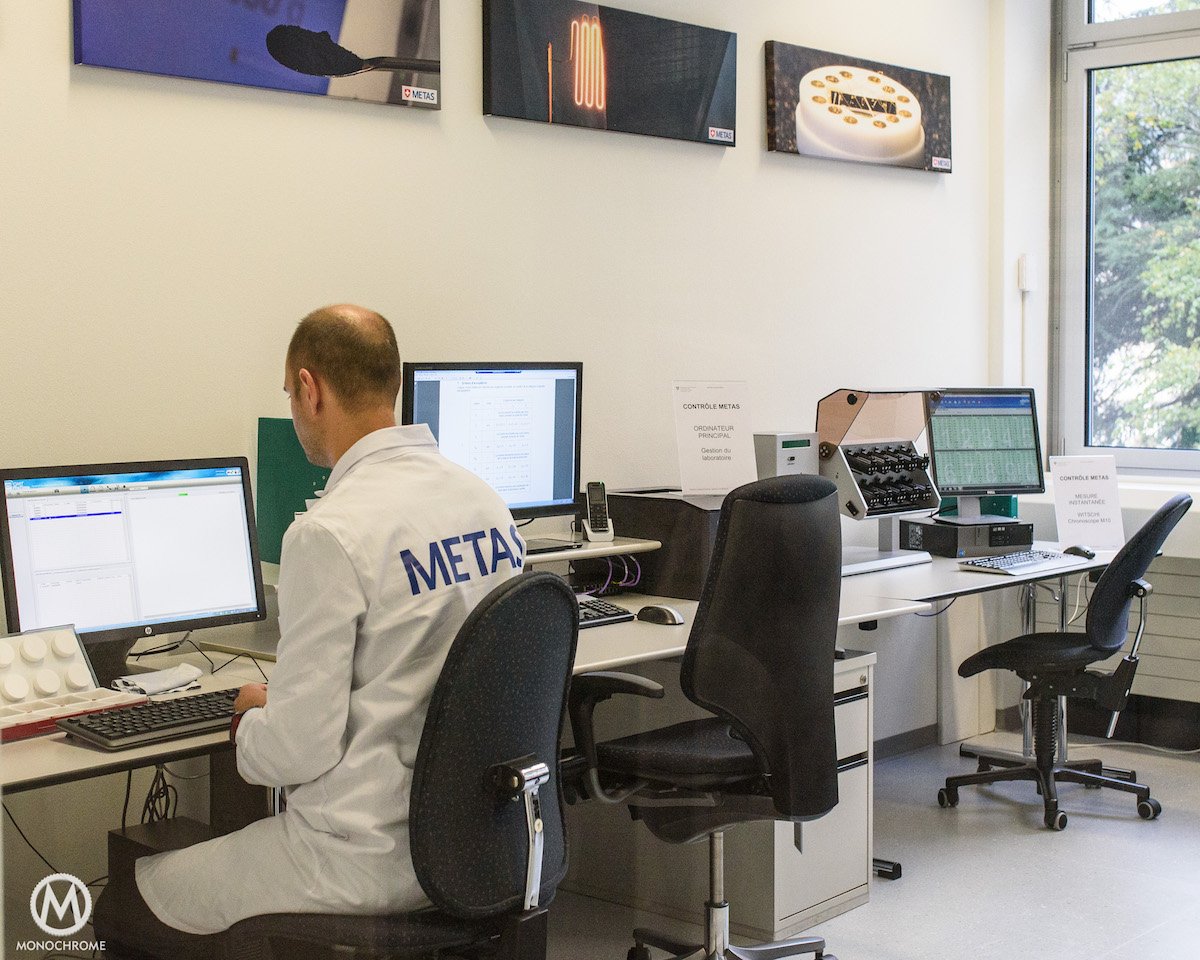
In the first part of this article, we showed you the importance that METAS certification has for Omega and, through the words of President Nick Hayek and CEO Stephen Urquhart, what are the challenges, ins and outs and issues of implementing such a new, proprietary and innovative certification. It’s time now to transport you in the heart of the Omega Manufacture and to have a detailed look at the facilities where METAS certifies the new Omega Master Chronometer watches.
As collectors and lovers of beautiful watches we admire craftsmanship and product quality. We expect accuracy, consistency and smooth operations. Hour after hour, day after day, year after year. We expect minimal maintenance and a long life of our watches. In this article we will discuss how does Omega ensure this for their co-axial watches. We focus on the assembly and certification processes. Production of watch components, distribution and sales are left out to keep the article concise.
The assembly is an industrialized process for all calibers. The cal. 8900 will be assembled in the new building in Biel. A brand new assembly facility has been established in Villeret for the cal. 8500/8501 and 8520/8521 movement assembly. Why Villeret? Villeret means better access to people with ‘watch genes’. In addition, Omega owned a piece of land. So they build a new, hypermodern facility. It has high ceilings and big windows.
And it is clean. Hyper-clean. Omega is “obsessed” with cleanness. Their argument? Who wants a watch where you can see dust particles under the glass. Talking about dust: did you know that there is a lot of dust around us that we cannot see? When we do nothing, our clothing generates 40 particles of dust per minute of about 5-10 microns ( a human hair has a diameter of more than 20 microns, which is the limit of what we can see). When we move, we produce 800 particles. If we do that, watchmakers do that as well. And all those dust particles pile up and end up in watches. Omega dealt with this by daily cleaning and by using special clothing. This brought back the 40 particles down to 20 – and from 800 to 200 particles when moving.
The assembly process works as follows: each movement ‘travels‘ on a rail from a workstation to another. The people working there are called operators. Each workstation adds certain components to the movement (e.g. the barrels, the balance wheel, etc…). This is partly done by robots and partly done by humans. Each workstation has a supply of raw components. When the movement arrives via the transportation line, the component is added and sent to the next station. Many tools are developed specifically for Omega.
When the movement has been assembled, it is send to COSC for certification. COSC receives the full movement (with exception of the oscillating weight). After certification, this raw calibre comes back and the movement is fully assembled. To be able to repair watches at a later stage, each watch gets the same number for case and movement. If you need replacement of the entire movement, both get a new number.
The movement is shipped to Biel for final assembly and certification. Although the Globemaster is the first watch with the Master Chronometer logo, all co-axial watches will go through the same process. The following picture visualizes the final assembly and certification process: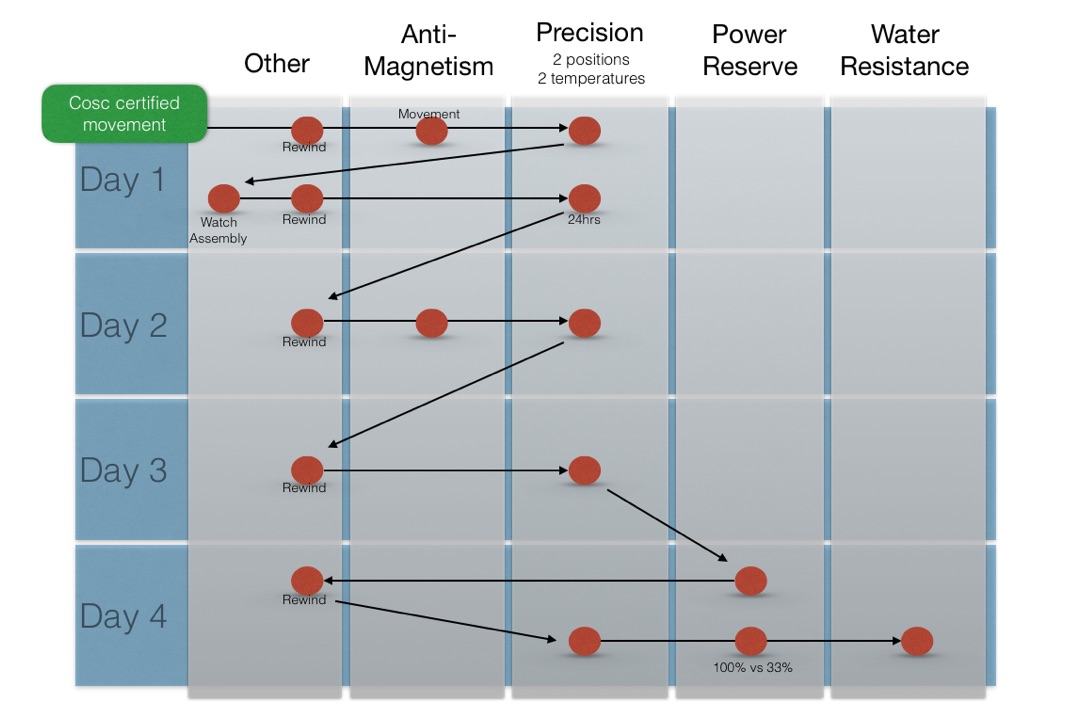
On Day 1, the COSC certified movement is rewind, tested for anti-magnetism, and consequently precision. This is an optical process (see photo below). The watch is assembled, rewound, and undergoes a 24 hour precision test. The next day the watch is again rewound, tested for anti-magnetism and precision. The process is repeated on day 3. Power reserve and water resistance are checked on day 4. The results of the tests are constantly monitored and all results are stored. For each watch a Metas certificate with test results is produced and available online for the buyer of that watch.
Machines are tested and calibrated by Metas. A Metas analyst is on-site all the time and monitors the process for abnormalities and deviations. He/she does that via statistical analysis of all manufacturer’s results. The analyst also does random sampling and re-tests. To finish with this highly innovative certification – and great innovation from Omega – here are some sample shots of METAS certification process, and of course a complete explanations of the 8 tests created by METAS and Omega.
THE EIGHT METAS APPROVED TESTS
1. AVERAGE DAILY PRECISION OF THE WATCH
This test runs over 4 days and checks the daily precision of the watch in real life wearing conditions. The watch is initially placed in six different positions and two alternating temperatures, then exposed to magnetism of 15,000 gauss, then demagnetized, then finally checked again in the same differing positions and temperatures. For each step, a photograph is taken of the watch and checked 24 hours later for accuracy against UTC time.
2. FUNCTION OF COSC-APPROVED MOVEMENT DURING EXPOSURE TO 15,000 GAUSS MAGNETIC FIELD
This test examines the movement of the watch only, placing it in two different positions, and subjecting it to a magnetic force of 15,000 gauss. During a time of 30 seconds in each position, the functioning of the movement is audibly checked using a microphone.
3. FUNCTION OF WATCH DURING EXPOSURE TO 15,000 GAUSS MAGNETIC FIELD
This test is similar to the second. On this occasion, instead of just the movement being tested, the entire watch is subjected to magnetic fields of 15,000 gauss, with the functioning being checked by way of audio. In today’s modern world, magnetism is all around us, in places such as tablets, phones, hairdryers and even the metallic clasps of women’s handbags. Mechanical watches without anti-magnetic innovation can suffer long-term effects in their accuracy when exposed to these magnetic fields.
4. DEVIATION OF DAILY PRECISION AFTER EXPOSURE TO 15,000 GAUSS MAGNETIC FIELD
This test works out the average deviation of the watch between day 2 and 3 of the first test. The result shows the daily precision of the watch before and after exposure to a magnetic field of 15,000 gauss.
5. WATER RESISTANCE
This test submerges the watch underwater, gradually applying more pressure up the point of the stated water resistance. For certain watches, it also goes beyond. This ensures that each watch is properly tested for underwater conditions.
6. POWER RESERVE
This test checks the power reserve of the watch by taking pictures at the beginning and end of the expected limit. Checking any deviation again, this proves that each watch functions accurately for its stated time. For wearers, it’s valuable to know that, even after a weekend on the bedside table, your watch will still be performing well.
7. DEVIATION OF RATE BETWEEN 100% AND 33% OF POWER RESERVE
This test puts the watch in six different positions, similar to each side of a dice. With the watch at full power, the watch spends 30 seconds in each position, with average precision recorded by way of audio . The power reserve is then reduced by two thirds and checked again, to ensure that precision is kept even when the watch is not at full power.
8. DEVIATION OF RATE IN SIX POSITIONS
This test is similar to the previous test, and checks for any deviation in the running time when the watch is placed in six different positions, similar again to each side of a dice. With 30 seconds in each position, the results are recorded through audio. By placing a watch in different positions, we can ensure a watch’s performance no matter what the wearer is doing, whether it’s sitting at a desk or actively playing sport.

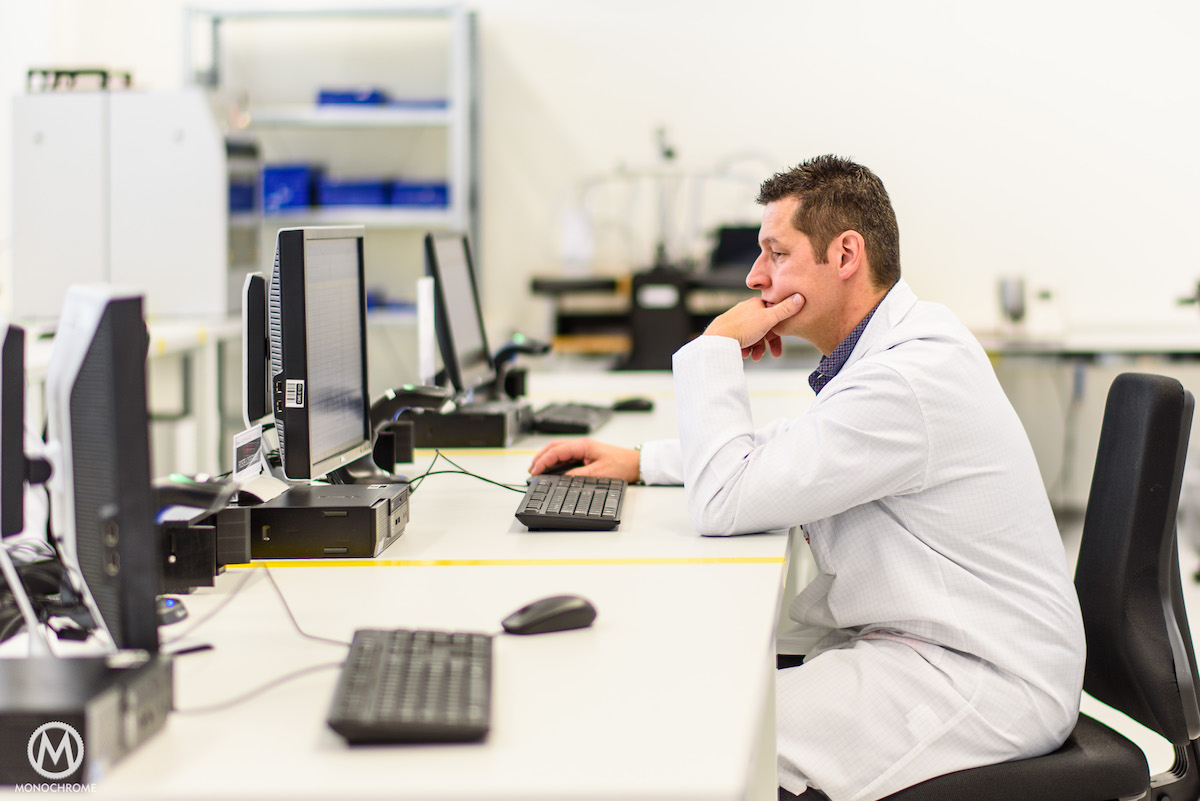
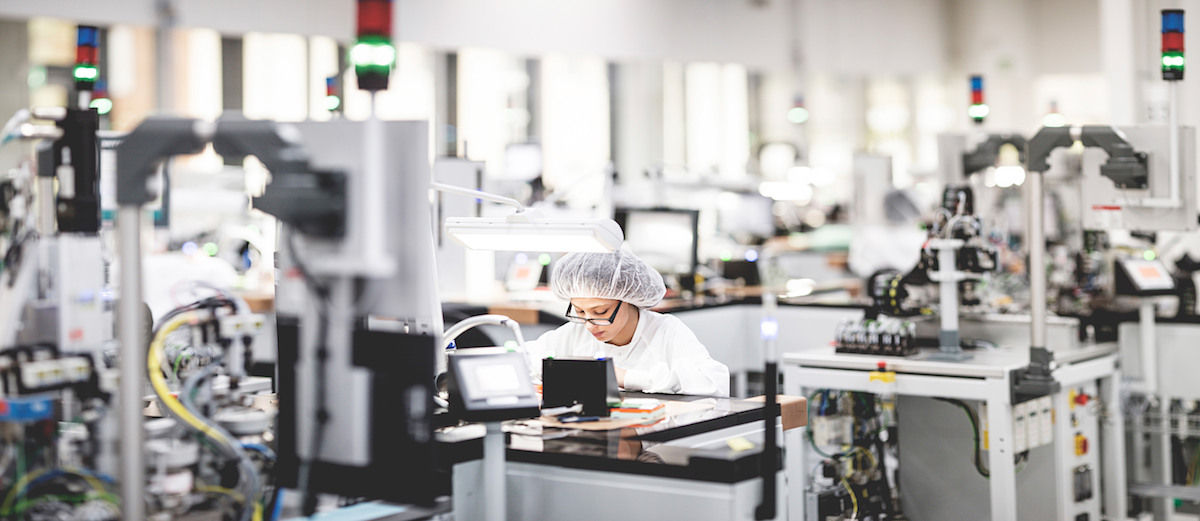
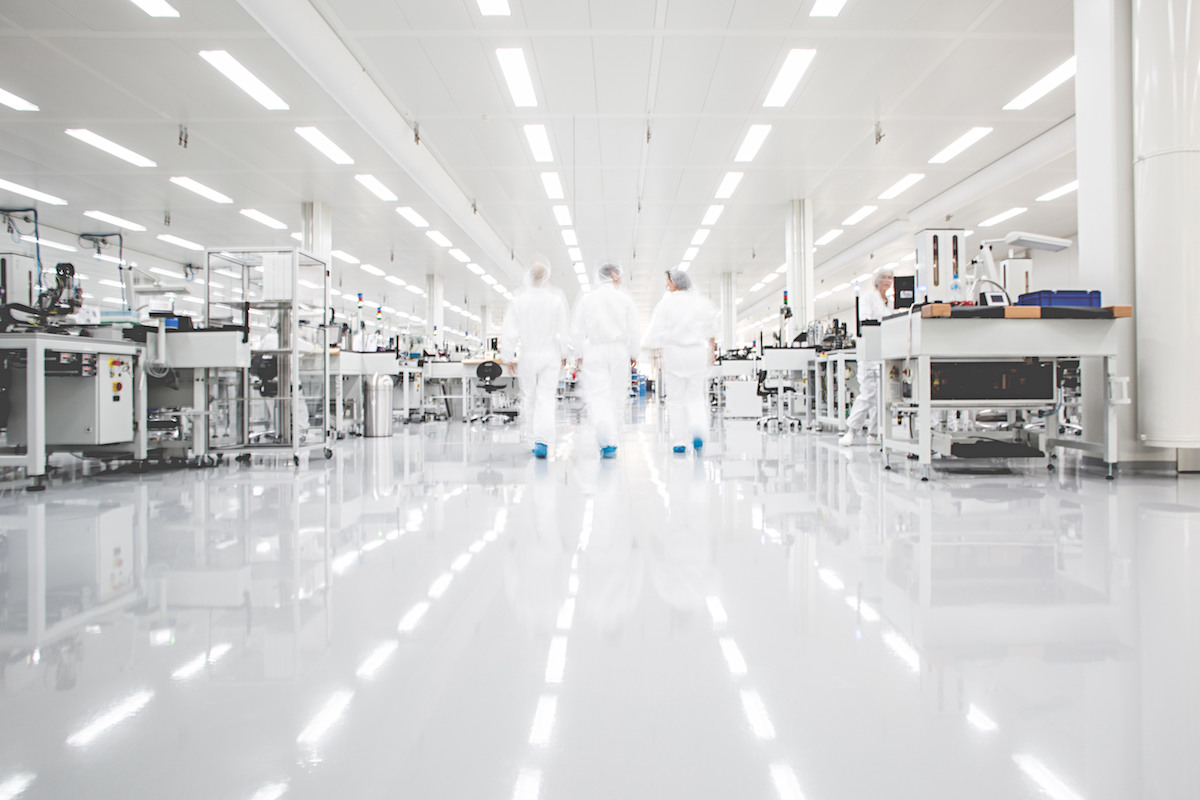



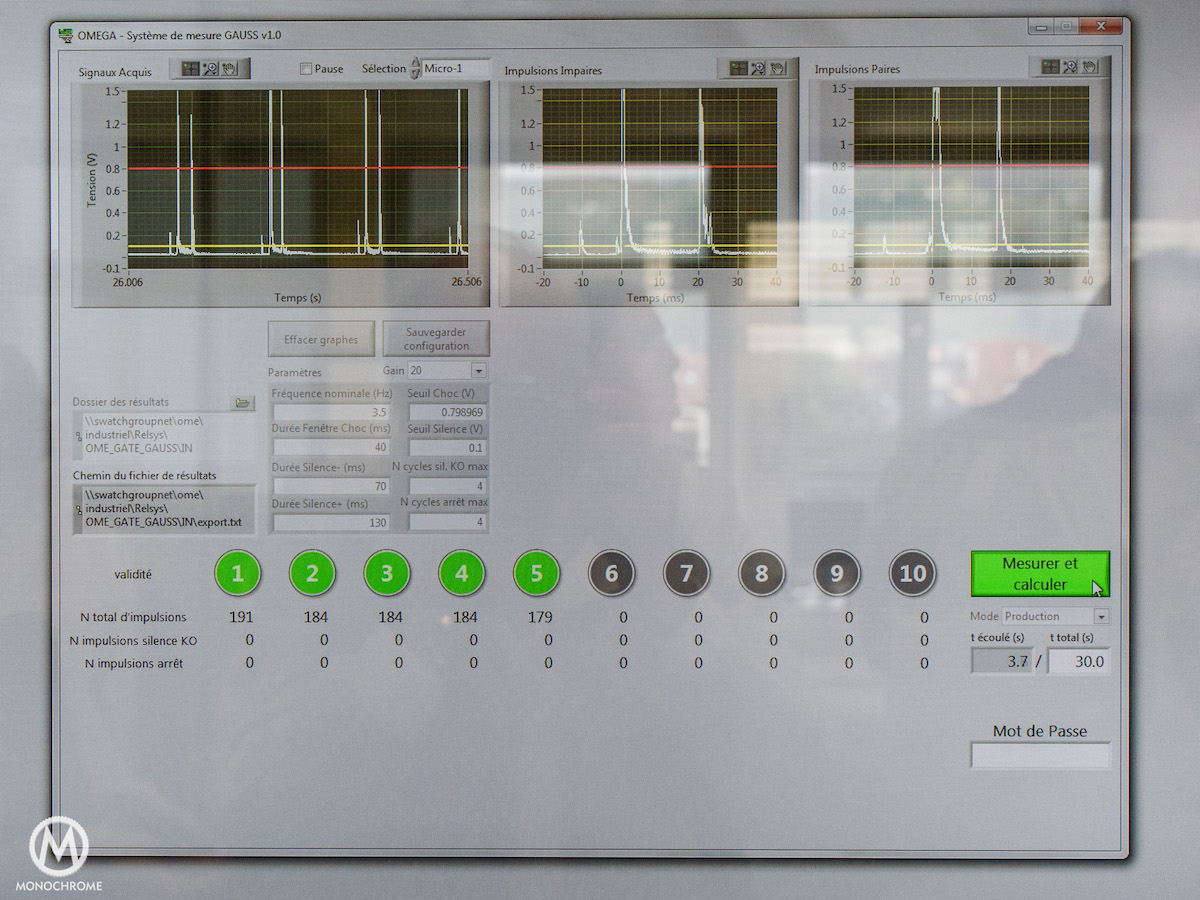
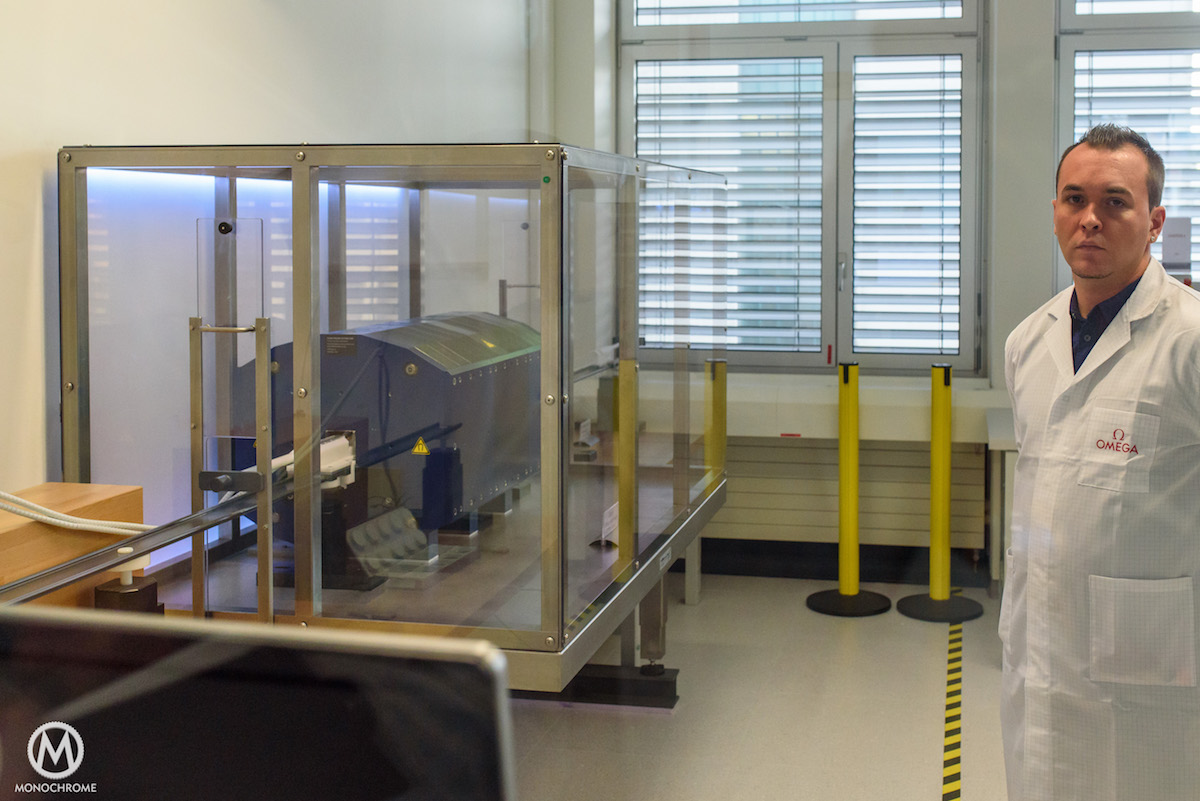
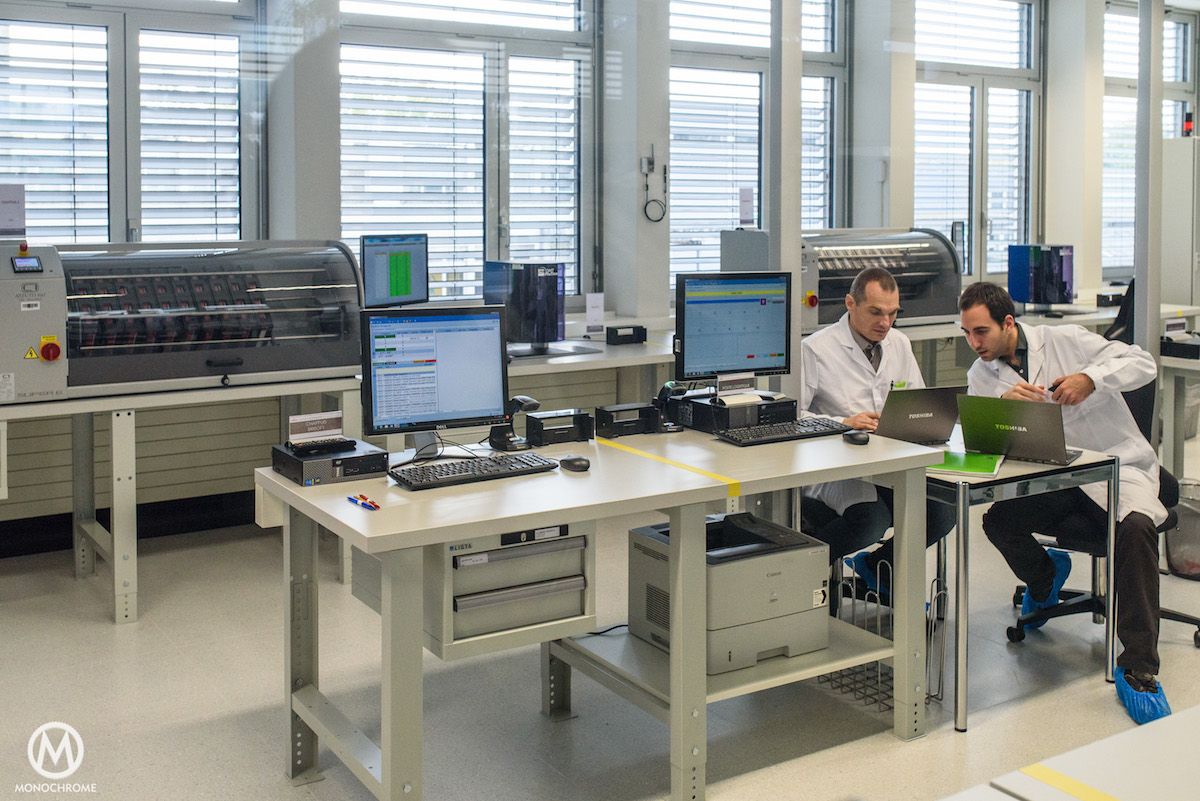

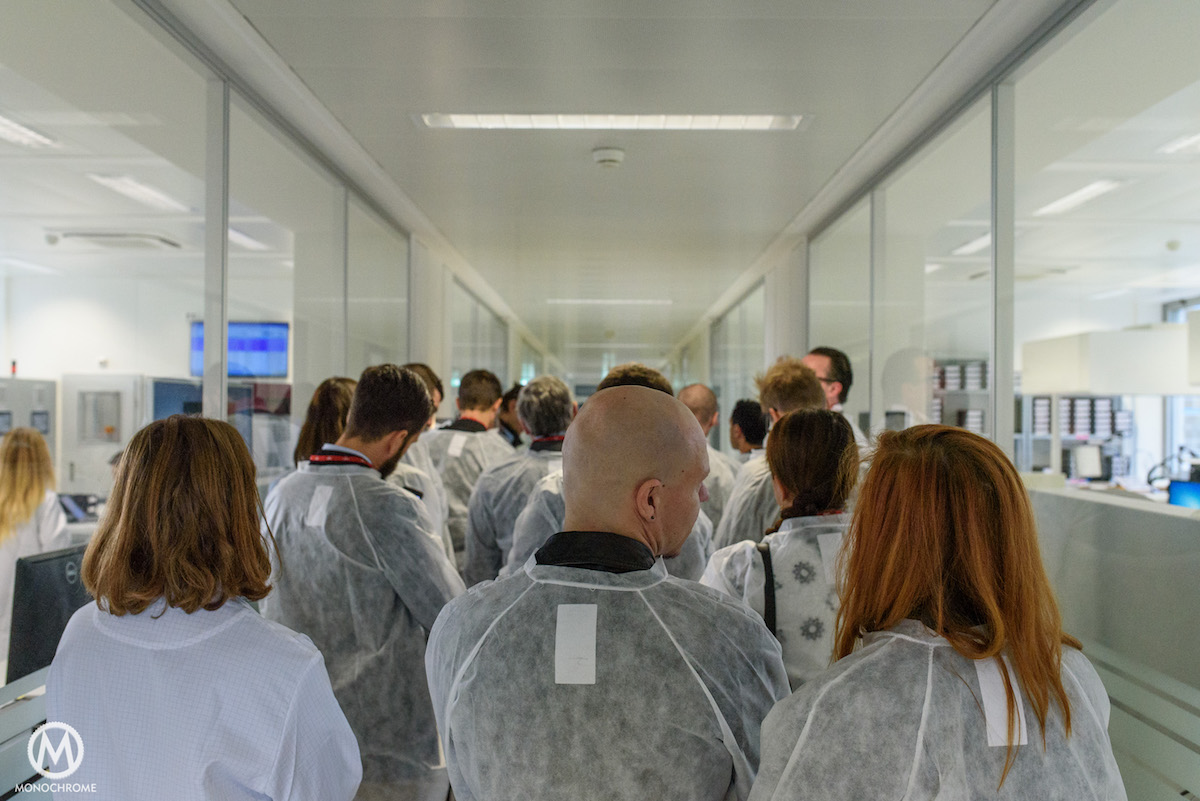




1 response
Thank you for collecting all this information and sharing it with us.